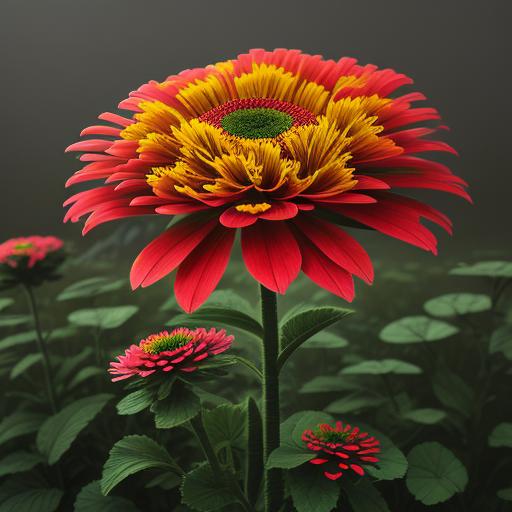Zinnias are a garden favorite, known for their vibrant colors and long-lasting blooms. However, one common issue many gardeners face is keeping these stunning flowers from toppling over. If you’ve found yourself frustrated by drooping zinnias, you’re not alone. But don’t worry—there are several effective strategies to keep your zinnias upright and flourishing. Read on to discover the secrets to maintaining sturdy zinnia plants and enjoy a garden filled with beautiful, upright blooms.
Why Zinnias Fall Over and How to Prevent It
The first step in solving the problem is understanding why zinnias fall over in the first place. Often, the culprits are weak stems, overcrowding, and insufficient support. Here’s how you can address these issues to ensure your zinnias remain upright and healthy.
- Choose the Right Variety
Not all zinnias are created equal when it comes to standing tall. Taller varieties such as ‘Benary’s Giant’ or ‘California Giants’ are more prone to falling over. Opt for more compact varieties like ‘Short Stuff’ or ‘Thumbelina’ if you want naturally sturdier plants. For those who love tall zinnias, don’t worry—you can still keep them upright with the following tips.
- Planting for Strength
Proper planting techniques can make a world of difference. Plant zinnias in an area with full sun, as insufficient light can lead to leggy, weak plants. Space them adequately to ensure good air circulation. Crowded plants compete for resources, leading to weaker stems. A general rule of thumb is to space your zinnias about 12 to 18 inches apart.
- Water Wisely
Water is essential, but too much can be detrimental. Overwatering can cause the soil to become too soft, making it hard for the roots to anchor the plant securely. Water your zinnias deeply but infrequently, allowing the soil to dry out between waterings.
- Stake for Support
For taller zinnia varieties, staking is often necessary. Place stakes in the ground when planting to avoid damaging the roots later. Use soft ties to gently secure the stems to the stakes, providing support without constriction. Bamboo stakes or wooden dowels are both excellent choices.
- Prune for Strength
Regular pruning can help your zinnias develop stronger, more resilient stems. Pinch back the tips of the plants when they are young to encourage bushier growth. Additionally, remove any dead or weak stems throughout the growing season to maintain the plant’s health and strength.
- Fertilize Smartly
Using the right fertilizer can also promote strong stems. A balanced, slow-release fertilizer applied at planting time will provide essential nutrients throughout the growing season. Avoid over-fertilizing, as too much nitrogen can result in lush, weak growth.
FAQs
Q: How often should I water my zinnias? A: Water your zinnias deeply once or twice a week, allowing the soil to dry out between waterings. Overwatering can weaken the plants and make them more prone to falling over.
Q: Can I grow zinnias in containers? A: Yes, zinnias can be grown in containers. Choose a compact variety, use a well-draining potting mix, and ensure the container receives full sun. Regular watering and staking may be necessary.
Q: What can I do if my zinnias are already falling over? A: If your zinnias are already falling over, carefully stake them using bamboo stakes or wooden dowels. Gently tie the stems to the stakes for support. Additionally, ensure they are not overcrowded and are receiving the right amount of water and nutrients.
Q: When should I start staking my zinnias? A: It’s best to place stakes in the ground at planting time to avoid root damage. As the plants grow, tie the stems to the stakes for support.
By following these tips, you can ensure your zinnias remain upright and vibrant all season long. Enjoy the beauty and color these flowers bring to your garden without the frustration of falling blooms. Happy gardening!

